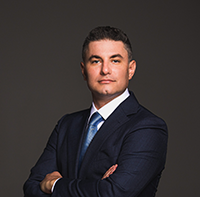It was recently announced that one of Uber’s self-driving, autonomous cars in Tempe, Arizona struck and killed a pedestrian. At this stage, it is unclear if the accident was the Uber’s fault or how the vehicle failed to avoid the pedestrian, but it does raise questions about self-driving vehicles and their overall safety. Miami car accident lawyer Prosper Shaked explains some of the risks and arguments surrounding autonomous cars and what the law has to say about them.
Are Self-Driving Cars Dangerous?
The question of safety with self-driving cars is something Uber has been testing, along with other companies that produce autonomous cars, like Google. Uber’s self-driving car program is being tested in Tempe, AZ, as well as Pittsburgh, PA; San Francisco, CA; and Toronto, Canada. In this program, every car has a “safety driver” who can take over the controls if there is a malfunction, but the cars are designed to drive on their own. While there have been car accidents before – some fatal – this is the first time that a pedestrian was killed by a self-driving car. Every time there is an accident like this, experts weigh in on various risks and ethical concerns.
Self-driving cars are touted as a safer option, and many of the accidents involving autonomous vehicles have been caused by human error. The computers in self-driving cars are designed to anticipate certain behaviors, but when human drivers act irrationally or break traffic laws, the computer may not predict that. This means autonomous cars may cause accidents a human would have avoided, since we can anticipate irrational or dangerous decisions from other drivers.
Most car accidents happen suddenly. Designers of autonomous cars point to their vehicles as safe, since a self-driving car will not get tired, distracted, or anxious behind the wheel. This helps improve reaction times, allowing a machine to hit the brakes faster than a human could. In this respect, a self-driving car may be able to avoid an accident better than a human.
Ultimately, the issue of whether a self-driving car is safe or not has not been decided. In many of the accidents that have made their way into the news, it is not clear whether a human driver would have done any better than the machine driver.
Who Can You Sue for a Self-Driving Car Accident?
Call us today at (305) 694-2676 or
contact us online for a free case evaluation.
Hablamos español.


One question that many engineers and programmers fail to consider is what happens to the victims of self-driving car accidents? In a traditional car accident, the human driver is held responsible for their actions and pays damages to any other drivers or occupants injured because of their negligent driving. However, an autonomous vehicle is a tool, and the thought of holding it liable for damages might not work in court.
Instead, the company that operates the vehicle might be responsible for any accidents. There is a driver behind the wheel in most test cars, which is how Uber operates its autonomous cars. This means that that driver is likely responsible for any problems since they are the human in the driver’s seat. Unlike the driver in a typical Uber accident case, this driver is likely a direct Uber employee. Alternatively, the programmers who failed to account for certain issues in the car’s programming may be held liable for accidents their cars cause. Either way, this may mean suing the self-driving car company for any accident injuries.
In many cases, a company can be held liable for the negligence of its employees. For example, in the case of commercial truck accidents, this means the trucking company can be held liable for its drivers’ errors. The situation is quite similar with a self-driving car, and the company operating the vehicle can be held liable for the errors its drivers or programmers make.
To prove a “vicarious liability” case like this, you must prove all of the following to hold the employer liable for its employee’s errors:
- The employee was working for the employer when the injuries occurred,
- The employee was performing their usual job tasks when the injury occurred, and
- The employer benefitted from the employee’s actions that lead to the accident.
In the case of a driver or programmer causing an accident by their driving or programming tasks, these elements are likely met. Legally, this type of process, where the employer answers for the employee’s negligence, is known as “respondeat superior.”
If a car accident like this were to occur in Miami, it would likely be restricted by Florida’s “no-fault” insurance rules. These rules only allow lawsuits in situations where the injuries meet a certain threshold for severity or cost. Talk to a Florida Uber accident attorney today to see if you are eligible to file a lawsuit in your case.
Miami Car Accident Lawyer Available for Free Consultations
Prosper Shaked is a Miami personal injury lawyer that handles car accident cases on behalf of injury victims and their families. If you were injured in a car accident in Hialeah, Miami Beach, or another city in the greater Miami area, call Prosper Injury Attorneys today. We offer free consultations on new cases. Our number is (305) 694-2676.
